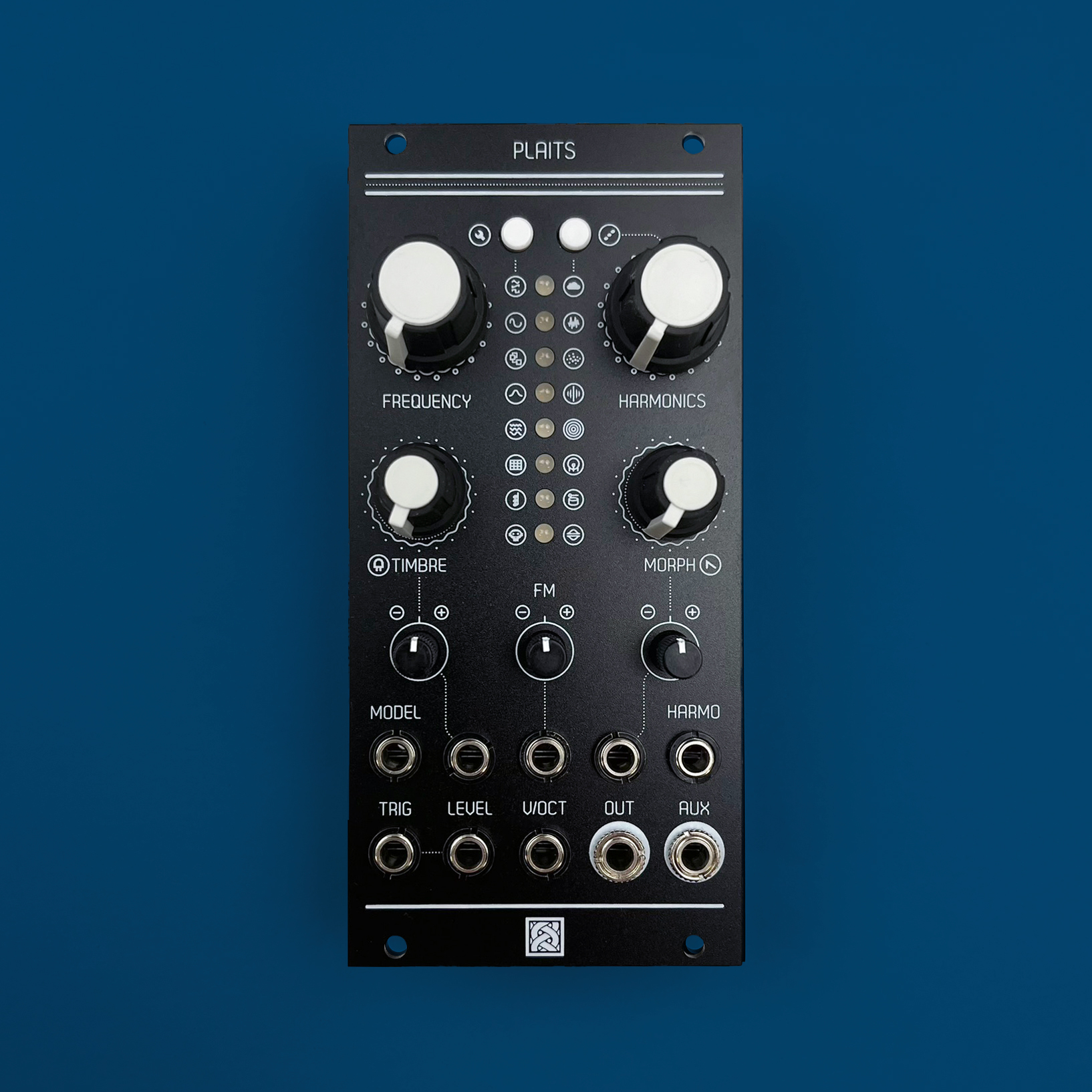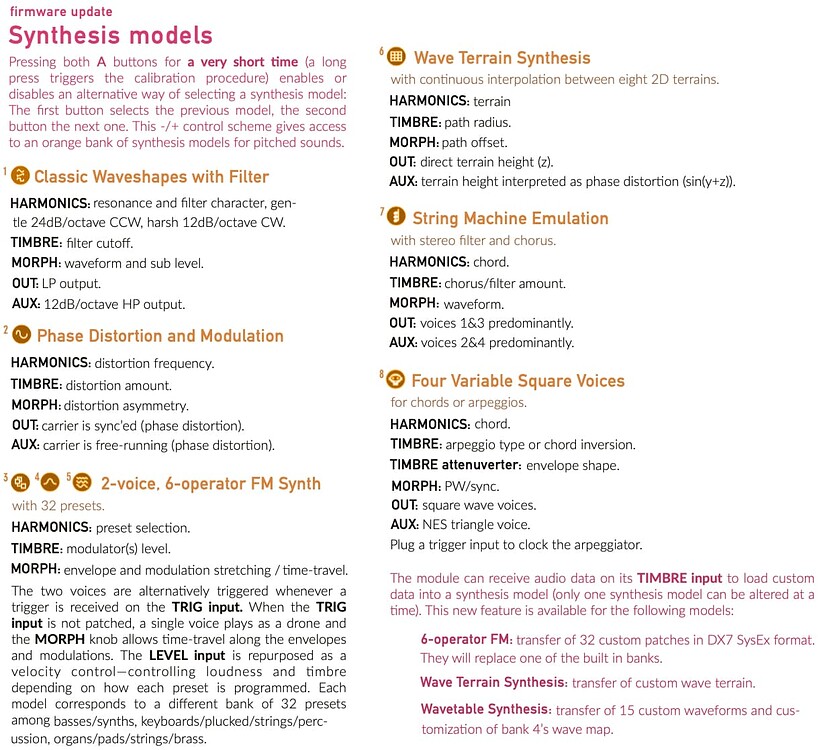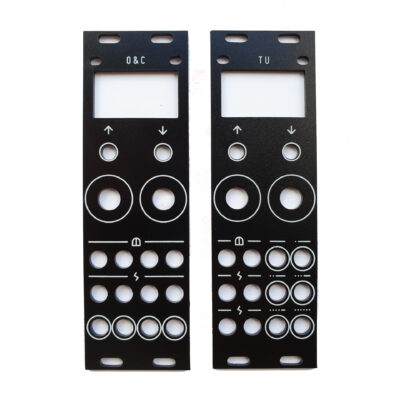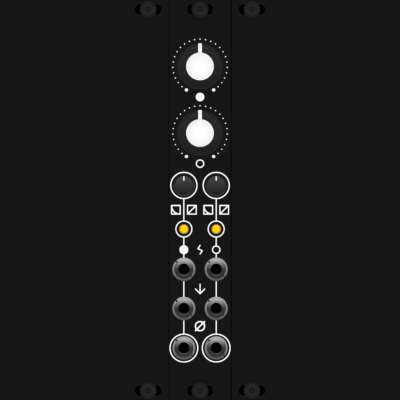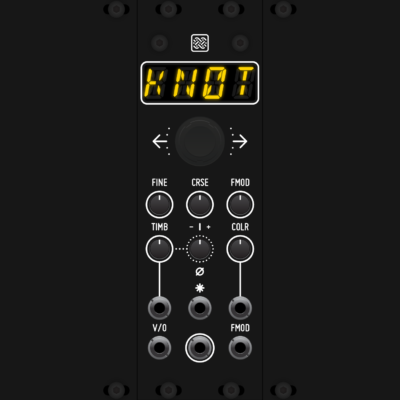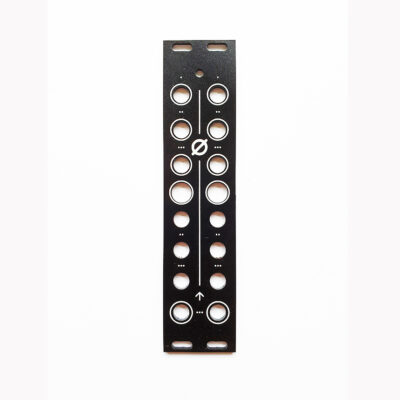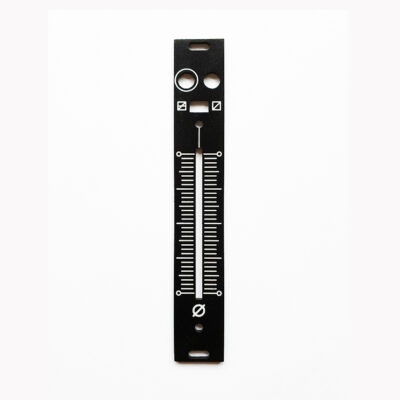Description
Features
16 deep synthesis models
8 synthesis models for pitched sounds
- Two detuned virtual analog oscillators with continuously variable waveforms.
- Variable slope triangle oscillator processed by a waveshaper and wavefolder.
- 2-operator FM with continuously variable feedback path.
- Two independently controllable formants modulated by a variable shape window (VOSIM, Pulsar, Grainlet, Casio CZ-style resonant filter…).
- 24-harmonic additive oscillator.
- Wavetable oscillator with four banks of 8×8 waves, with or without interpolation.
- Chord generator, with divide down string/organ emulation or wavetables.
- A collection of speech synthesis algorithms (formant filter, SAM, LPC), with phoneme control and formant shifting. Several banks of phonemes or segments of words are available.
8 synthesis models for noise and percussions
- Granular sawtooth or sine oscillator, with variable grain density, duration and frequency randomization.
- Clocked noise processed by a variable shape resonant filter.
- 8 layers of dust/particle noise processed by resonators or all-pass filters.
- Extended Karplus-Strong (aka Rings’ red mode), excited by bursts of white noise or dust noise.
- Modal resonator (aka Rings’ green mode), excited by a mallet or dust noise.
- Analog kick drum emulation (two flavors).
- Analog snare drum emulation (two flavors).
- Analog high-hat emulation (two flavors).
Dual output
- The AUX output carries a variant, sidekick or by-product of the main signal.
- Patch both OUT and AUX to Warps for weird hybridization experiments!
Internal or external modulations
- Dedicated CV input for synthesis model selection. No need to activate a mysterious
METAmode! - An internal decay envelope is normalled to the TIMBRE, FM and MORPH CV inputs: the amount of internal modulation is directly adjusted with the attenuverters.
Internal low-pass gate (LPG)
- Dedicated LEVEL CV input controlling the amplitude and brightness of the output signal.
- The internal LPG can also be directly plucked by the trigger input.
- Two parameters of the LPG can be adjusted: amount of low-pass filtering (VCFA to VCA), and response time of the virtual vactrol.
Specifications
- All inputs: 100k impedance, DC to 2kHz.
- FM, MORPH, TIMBRE input range: +/- 8V.
- HARMO and MODEL input range: +/- 5V.
- LEVEL and TRIG input range: 0 to +8V.
- V/OCT input range: -3 to +7V.
- 16-bit CV capture.
- Audio output: 48kHz, 16-bit, DC-coupled.
- Internal processing: 32-bit floating point.
Plaits vs Braids?
Plaits shares no hardware or software with Braids!
- Floating-point DSP code written from scratch or inherited from Elements, Warps and Rings.
- Band-limited synthesis used almost everywhere, producing aliasing-free results at the base sample rate of 48kHz (Braids ran at 96kHz and used naive oversampling).
- High-quality Sigma-Delta ADC for CV acquisition, approaching a resolution of 16-bit (12-bit for Braids).
- ADC reads are interpolated in software to eliminate zipper noise.
- DC-coupled audio output, extending the range of the module to very low frequencies (Braids could not reach LFO ranges).
- Lean hardware design: less HP, mA and €.
Original design:
Hardware: cc-by-sa-3.0
By: E. Gillet (e@mutable-instruments.net)
